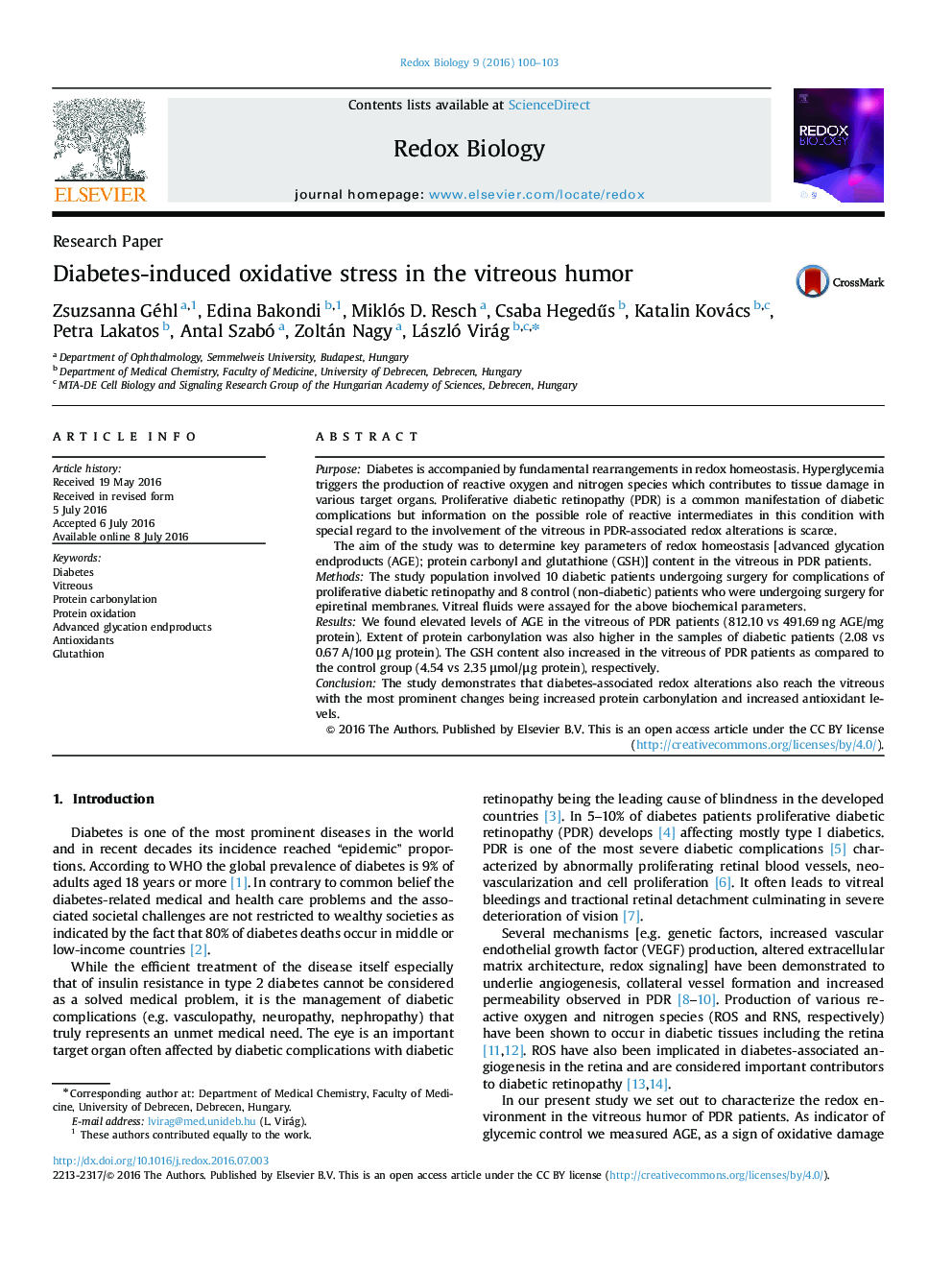| Article ID | Journal | Published Year | Pages | File Type |
|---|---|---|---|---|
| 1922811 | Redox Biology | 2016 | 4 Pages |
•Vitreal AGE levels are elevated in PDR patients.•Extent of protein carbonylation is higher in the vitreal samples of PDR patients.•The glutathione content is increased in the vitreous of PDR patients.
PurposeDiabetes is accompanied by fundamental rearrangements in redox homeostasis. Hyperglycemia triggers the production of reactive oxygen and nitrogen species which contributes to tissue damage in various target organs. Proliferative diabetic retinopathy (PDR) is a common manifestation of diabetic complications but information on the possible role of reactive intermediates in this condition with special regard to the involvement of the vitreous in PDR-associated redox alterations is scarce.The aim of the study was to determine key parameters of redox homeostasis [advanced glycation endproducts (AGE); protein carbonyl and glutathione (GSH)] content in the vitreous in PDR patients.MethodsThe study population involved 10 diabetic patients undergoing surgery for complications of proliferative diabetic retinopathy and 8 control (non-diabetic) patients who were undergoing surgery for epiretinal membranes. Vitreal fluids were assayed for the above biochemical parameters.ResultsWe found elevated levels of AGE in the vitreous of PDR patients (812.10 vs 491.69 ng AGE/mg protein). Extent of protein carbonylation was also higher in the samples of diabetic patients (2.08 vs 0.67 A/100 μg protein). The GSH content also increased in the vitreous of PDR patients as compared to the control group (4.54 vs 2.35 μmol/μg protein), respectively.ConclusionThe study demonstrates that diabetes-associated redox alterations also reach the vitreous with the most prominent changes being increased protein carbonylation and increased antioxidant levels.
Graphical abstractFigure optionsDownload full-size imageDownload as PowerPoint slide
